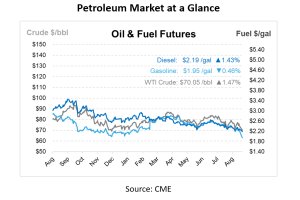
Canada’s Push for Clean Fuel
Canada’s Clean Fuel: As the world moves towards achieving net-zero emissions by 2050, an important question arises: how can we reduce the carbon footprint of the fuels we use every day? Canada, with its resources and commitment to innovation, is playing an important role in producing and using clean fuels.
Canada’s Clean Fuel Regulations are central to this transition. These regulations aim to reduce the carbon intensity—the amount of pollution—from the fuels we use daily, such as gasoline and diesel. The goal is to decrease the carbon intensity of these fuels by 15% below 2016 levels by 2030. This target is not just about reducing environmental impact; it’s about significantly cutting Canada’s greenhouse gas (GHG) emissions, with the potential to reduce GHGs by 26 million metric tons by 2030. To put that into perspective, it’s like removing about two weeks of greenhouse gas emissions from the Canadian economy.
To meet these reductions, Canada’s Clean Fuel Regulation require a gradual reduction in carbon intensity – that has started in 2023, with stricter requirements each year. Fuel suppliers are encouraged to innovate by creating or purchasing credits through a market designed to keep costs low while driving advancements in clean fuel technologies.
This push for cleaner fuels is also about reducing emissions. The Canadian government is investing in the clean fuel sector, with a recent $1.5 billion commitment towards a Clean Fuels Fund. This fund supports the production and adoption of low-carbon fuels, such as hydrogen and biofuels, which are important to Canada’s future energy landscape.
Moreover, the Clean Fuel Regulations are expected to benefit the Canadian economy. They will create demand for low-carbon fuels derived from crops like canola, offering farmers a way to diversify their businesses. The regulations also support the growth of the clean energy sector, which employs over 322,000 Canadians, with jobs that pay well above the national average.
Provinces
Canada’s approach to clean fuels is not isolated to federal action; several provinces have already implemented their own standards, setting the stage for broader national adoption.
- British Columbia has a Renewable and Low Carbon Fuel Requirement that mandates a 5% ethanol content in gasoline and 4% in diesel fuel. The province’s Low Carbon Fuel Standard aims to achieve a 20% reduction in fuel carbon intensity by 2030.
- Alberta has implemented a Renewable Fuels Standard that requires a minimum of 5% renewable alcohol in gasoline and 2% renewable diesel in diesel fuel. Renewable fuels must demonstrate at least 25% fewer GHG emissions than their petroleum counterparts.
- Manitoba has an Ethanol Mandate requiring at least 10% ethanol in gasoline and a Biodiesel Mandate requiring 5% renewable content in diesel fuel.
- Ontario has a Cleaner Transportation Fuels regulation, which requires fuel suppliers to blend 10% renewable content in gasoline, increasing to 15% by 2030. The renewable content must emit at least 45% fewer greenhouse gases than fossil fuels.
- Saskatchewan requires 2% renewable diesel content under the Renewable Diesel Act and mandates a 7.5% ethanol content in gasoline.
- Quebec introduced regulations in 2023 that require 10% low-carbon fuel content in gasoline, increasing to 15% by 2030, and 3% in diesel, increasing to 10% by 2030.
These provincial initiatives align with and support Canada’s Clean Fuel Regulations, creating a cohesive national approach to reducing carbon emissions. They also encourage innovation across the country, driving investments in low-carbon technologies and fuels that can help Canada meet its emission reduction goals.

This article is part of Daily Market News & Insights
Tagged:
MARKET CONDITION REPORT - DISCLAIMER
The information contained herein is derived from sources believed to be reliable; however, this information is not guaranteed as to its accuracy or completeness. Furthermore, no responsibility is assumed for use of this material and no express or implied warranties or guarantees are made. This material and any view or comment expressed herein are provided for informational purposes only and should not be construed in any way as an inducement or recommendation to buy or sell products, commodity futures or options contracts.





